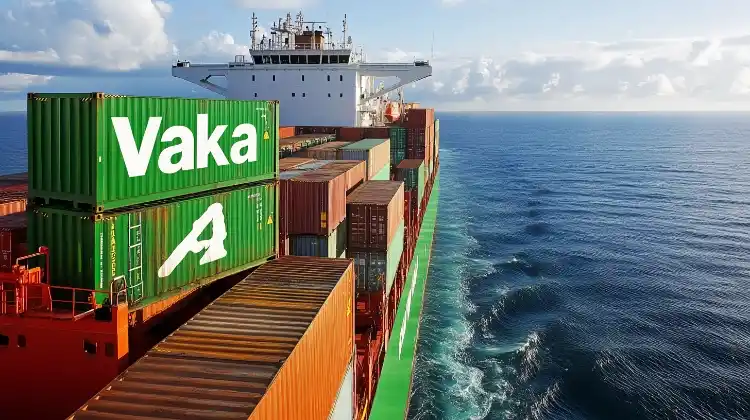Standing Desk Frame New Arrival with Space-saving & Freight-saving Package
The highlights of our new arrival standing desk frame
Our another 2-motor 3-stage standing desk frame just released. This new arrival is accompanied by a package that is not only space-saving but also a boon for freight savings. One of its standout features is the intelligent division of the standing desk frame into 2 parts, neatly packed in 2 separate cartons. This not only leads to a substantial reduction in package volume but also offers remarkable ease of portability. Handling and transporting this standing desk frame becomes a breeze even for girls with limited physical strength.
The standing desk frame M320F model has an extremely low volume of just 0.05CBM/set. In a 20GP container, a whopping 476sets of such standing desk frames with pallets can be accommodated. In a 40HQ containers, an impressive 840sets with pallets can be loaded. In stark contrast, the market average package volume is around 0.07~0.08CBM/set of standing desk frames (Per 20GP container can load around 300sets, Per 40HQ container can load around 720sets). With this innovative packaging strategy, we are able to help our clients to cut around 20~50% in shipping costs, providing a major advantage in their business endeavors.


Why do we take the package design seriously?
The sea freight cost has increased sharply over the last year, and the situation won’t change in a short time. Mainly because:
Impact of the epidemic:
At the beginning of 2020, due to the outbreak of the COVID-19 pandemic, global trade was hit, the resumption rate of factories, ports, and terminals was low, and the exported containers were scattered all over the world, with poor return flow, which caused the container freight index to be affected to a certain extent, and may fluctuate or fall.
With the resumption of work and production after China’s anti-epidemic efforts have achieved significant results, while the uncontrolled epidemic in Europe, the United States, and other countries and regions has caused production to stagnate, the huge difference between the two has caused China’s export trade to rebound sharply.
According to data from the General Administration of Customs of China[1], in the first 11 months of 2020, my country’s total foreign trade imports and exports totaled 29.04 trillion yuan, and imports and exports have achieved positive growth for 6 consecutive months. In November, my country’s total imports and exports totaled 3.09 trillion yuan, a year-on-year increase of 7.8%, of which exports were 1.8 trillion yuan, a year-on-year increase of 14.9%. This has led to a significant increase in China’s demand for export container transportation, which in turn has driven up the freight index.
Market supply and demand relationship:
In the second half of 2020, the market demand for shipping containers continued to be strong, but at the same time, the recovery of shipping capacity was relatively lagging. Even if shipping companies restore capacity by replacing large ships on individual voyages and suspending or canceling some suspensions, it will still take time. This has further exacerbated the imbalance between supply and demand, leading to continued high freight rates.
According to data released by the Shanghai Shipping Exchange, the China Export Container Freight Index (CCFI) was 1658.58 on December 31, 2020, up 84.8% for the whole year. For example, according to the Shanghai Export Container Freight Index, the low point in the first half of 2020 was 855.34 points, and it rose to 2129.26 points on December 4, a large increase.
From the perspective of different routes, freight rates on routes such as the West Coast of the United States (basic port) and the East Coast of the United States (basic port) continued to strengthen, pushing the overall container shipping price index higher, and the freight rate of 40-foot containers on the East Coast of the United States broke through the US$4,700 mark, setting a record high. The freight rate growth on some specific routes was even more significant. For example, on the Latin American route, the freight price was US$1,200-1,300 per container before June 2020. By August 2020, it had increased tenfold to US$14,000 per container.
The epidemic has caused countries around the world to adopt different degrees of blockade measures, production and consumption in many countries have been suppressed, international trade has been hindered, and global maritime trade has declined. However, China’s epidemic prevention and control has achieved results, and it has taken the lead in resuming work and production. China’s export trade has recovered rapidly, becoming the main supplier of global anti-epidemic materials and daily necessities, driving China’s export container transportation market demand to continue to be high, driving up the freight index.

Supply chain obstruction:
The epidemic has caused global supply chain disorder, port operation efficiency has dropped significantly, and ship turnover has slowed down. A large number of containers are stranded overseas, and empty containers cannot be returned in time. It is difficult to find a container at China’s coastal ports. For example, due to the epidemic, European and American ports have accumulated goods, and truck drivers are in short supply, which has hindered container loading & unloading & transportation, and the capacity cannot be effectively released, exacerbating the tension in container capacity and driving up freight rates.
In the second half of 2020, with the changes in the epidemic situation abroad, the demand for food, epidemic prevention protective gear, home furniture, sports equipment, electronic consumer products, and other goods in some regions increased rapidly. At the same time, merchants in the European and American markets prepared for Christmas, and the import volume increased further. South Africa is in the spring farming season, and the demand for fertilizers, seeds, and other materials is also growing. These factors have jointly led to strong transportation demand in the export container shipping market and pushed up freight rates.
At the beginning of the epidemic, shipping companies were pessimistic about market expectations, and a large number of liner capacity was suspended, dismantled, and canceled. After the recovery of transportation demand beyond expectations, the capacity recovery in the short term was limited, and the tight space situation was difficult to quickly alleviate, resulting in a continuous rise in freight rates.
Other factors:
International oil prices have risen, and fuel costs account for a high proportion of the operating costs of container shipping companies. The rise in oil prices has increased the operating costs of shipping companies. In order to make up for the rising costs, shipping companies have raised freight rates.
Based on this, we designed this standing desk frame with space-saving & freight-saving package design, so that we can stand closely with clients, actively respond to market changes & overcome tough time & achieve new long-term growth together.
Vaka is pround to be one of the leading ergonomic standing desk suppliers and manufacturers in China.









